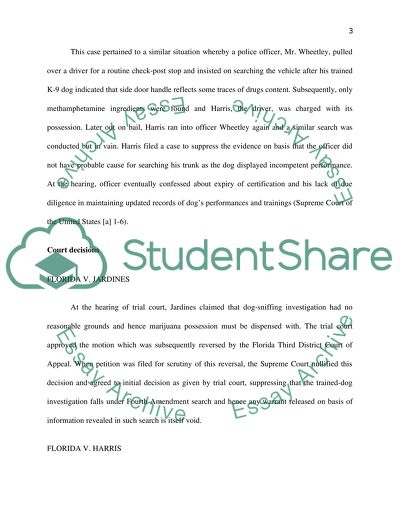Cite this document
(“Florida v. Harris and Florida v. ardines Essay Example | Topics and Well Written Essays - 1000 words”, n.d.)
Florida v. Harris and Florida v. ardines Essay Example | Topics and Well Written Essays - 1000 words. Retrieved from https://studentshare.org/law/1482496-florida-v-harris-and-florida-v-ardines
Florida v. Harris and Florida v. ardines Essay Example | Topics and Well Written Essays - 1000 words. Retrieved from https://studentshare.org/law/1482496-florida-v-harris-and-florida-v-ardines
(Florida V. Harris and Florida V. Ardines Essay Example | Topics and Well Written Essays - 1000 Words)
Florida V. Harris and Florida V. Ardines Essay Example | Topics and Well Written Essays - 1000 Words. https://studentshare.org/law/1482496-florida-v-harris-and-florida-v-ardines.
Florida V. Harris and Florida V. Ardines Essay Example | Topics and Well Written Essays - 1000 Words. https://studentshare.org/law/1482496-florida-v-harris-and-florida-v-ardines.
“Florida V. Harris and Florida V. Ardines Essay Example | Topics and Well Written Essays - 1000 Words”, n.d. https://studentshare.org/law/1482496-florida-v-harris-and-florida-v-ardines.


